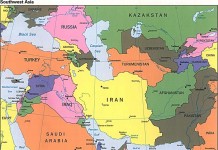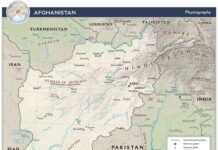Context
 The new Chinese Premier Li Kegiang made his first official visit to India and Pakistan last week. The trip was watched closely around the globe for what it represented. Pakistan and China have a strategic relation going back decades, and many believe it has taken on an additional significance for the purpose of countering the growing clout of India.
The new Chinese Premier Li Kegiang made his first official visit to India and Pakistan last week. The trip was watched closely around the globe for what it represented. Pakistan and China have a strategic relation going back decades, and many believe it has taken on an additional significance for the purpose of countering the growing clout of India.
The global politics, and even the weather patterns, are changing so quickly that the ‘all weather’ friendship cannot remain the same either. New factors are constantly causing the equation to evolve.
For one, Sino-Indian trade is growing steadily, and is projected to reach $100 billion in the next two to three years. On the other hand, Pakistan’s trade with India is expected to reach $15 billion. Secondly, irrespective of the security situation of Afghanistan, both China and India are investing heavily in its mineral resources. The Chinese trade activities are taking place despite ongoing border tensions with India and NATO’s presence in Afghanistan. India and China are also the integral members of BRICS, a body many believe is an emerging platform to counter western influence, especially economics, in different parts of the world.
Analysis
China, Indian Investments in Afghanistan
Over the years, China has increased its economic interests in Afghanistan and has invested heavily in exploiting its mineral resources. According to the United States Geological Survey, Afghan mineral reserves are worth $1 trillion dollars. While Afghan sources present this estimate to be around $3 trillion. Metallurgical Corporation of China (MCC) and Jiangxi Copper Corporation (JCCL) won the tender in 2008 to develop the copper deposits located in Logar, and is putting in $4.4 billion for this purpose.
In contrast, India is investing up to $11 billion dollars in Afghanistan to mine the Hajigak iron ore. The project involves a consortium of 7 states and many private firms. Reports indicate the Hajigak deposits contain about 1.8 billion tons of ore, with an exceptionally high iron concentration ranging from 61 percent to 64 percent.
However, unlike China, India does not share a border with Afghanistan and the sea route can be expensive. This is why India has been exploring the Pakistani land route for transport of iron ore.
As compared to using the longer Iranian route via Chahbhar, India prefers Pakistan for transporting the ore out and for building a slurry pipeline. While Pakistan approved the trade and transit treaty that allows Afghanistan to send goods to India, it has remained concerned about losing influence in Afghanistan as Indian economic clout increases there.
Mining work is expected to begin in 2014 as the Afghan forces take over the security responsibility of the country. However, there are concerns whether Afghans will be able to provide the needed security.
American Posture
On the other hand, American officials have welcomed these investments in Afghanistan.
“We appreciate very much the significant role that India is playing in Afghanistan. In fact, we see India as kind of the economic linchpin for future,” US Assistant Secretary of State Robert Blake informed lawmakers in February during a hearing of Asia and the Pacific Sub-committee of the House Foreign Affairs Committee.
“As our troops (and) their spending draws down, it’s going to be much more important now to establish a private-sector basis for the Afghan economy and to make a trade-based economy and not an aid-based economy. India is such an important role to play in that,” added Blake.
Meanwhile, US has wanted to keep Iran out of this regional trade, and has preferred the TAPI gas pipeline as oppose to the Iran-Pakistan.
Trade Not Aid and its Implications for Pakistan, Afghanistan
‘Trade not Aid’ has been one of the main demands of Pakistan from US, and now Nawaz Sharif also presented it to the new Chinese Premier. The challenge is while India and China are investing in Afghanistan, they both see Pakistan from a security perspective, and not necessarily as an economic opportunity. With Chinese economic interests growing in Afghanistan, like India, it would also want Pakistan to use its influence in ensuring the security and stability of Afghanistan. This is the same as US and NATO that are depending on Pakistan for withdrawal of its equipment from Afghanistan and to rein in the extremists. The growing dilemma for Pakistan is that while it is being expected to ensure regional security, it is coming at a huge economic cost to the nation.
At the same time, despite insistence from Afghanistan, India and China both have refrained from getting involved directly in the military affairs of the country.
As far as India is concerned, it is not clear if it would continue this posture. Surprisingly, President Hamid Karzai and Chinese Premier Li Keqiang ended up in India at about the same time. Majority of the media sources reported on them as separate visits and did not point to the significance of this coincidence. While Pakistan’s ties have improved with India, but not to the extent to make it oblivious to the occurrence.
The visit of President Karzai to India was meant to solicit more defense equipment and military training from India. The training of Afghan army by India has been a cause of grave concern and a red line for Pakistan. Moreover, Karzai’s trip has taken place in the aftermath of increased tensions on the border between Pakistan and Afghanistan.
By visiting India first, and while Karzai was there, China is conveying to Pakistan, India and Afghanistan, it gives more importance to the economic and trade relations as oppose to security concerns. The implied message will obviously have a positive influence on their ties with each other. At the same time, the Chinese message is likely to be only valid as long as India does not play a countering role in the American pivot to the Pacific, which ultimately will also determine the fate of BRICS, and the full membership of India and Afghanistan to SCO.



